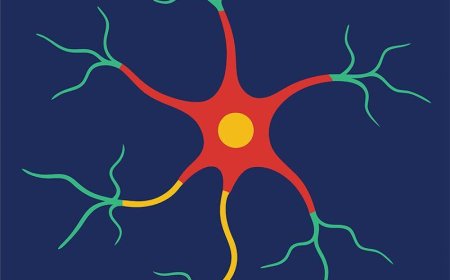How the Immune System Fights Infections: Body Defense Explained
Learn how your immune system defends against bacteria, viruses, and more. Understand immune responses, fever, inflammation, and antibodies in action.
🛡️ How Your Body Fights Infections
🧠 Introduction: The Body’s Battle Plan
When germs like bacteria or viruses get into your body, your immune system jumps into action. It works like a super-organized army, following a smart plan to recognize the invader, attack it, and then remember how to fight it better next time.
In this article, we’ll break down exactly how your body fights infections:
⚠️ How your body detects germs
⚔️ What happens during an immune response
🧬 The roles of antibodies and immune memory
🌡️ How fever and inflammation help you heal
💪 What happens after the battle is over
Let’s take a look at the incredible way your immune system protects you!
🔍 Step 1: Spotting the Invader
Your immune system starts by detecting a germ—whether it’s a virus, bacterium, or something else trying to sneak into your body.
Germs enter through the:
Mouth or nose (in the air or food)
Cuts or scrapes (through your skin)
Eyes or open wounds
Your white blood cells, especially macrophages, are always on patrol. They recognize anything that doesn’t belong using special markers on the surface of cells called antigens.
Once they find something suspicious, they sound the alarm by sending chemical signals to other immune cells.
⚔️ Step 2: Launching the Immune Response
After the alarm is raised, your immune system goes into battle mode.
Here's what happens next:
Macrophages gobble up germs and show parts of them (antigens) to helper T cells
Helper T cells send signals to activate B cells and killer T cells
B cells make antibodies to attach to the germs
Killer T cells destroy infected body cells before the infection spreads
More white blood cells rush to the area to help
This process causes swelling, redness, and heat, known as inflammation, which means your body is healing.
🌡️ Step 3: Fever and Inflammation – Help or Harm?
When you have an infection, you might get a fever or feel sore and swollen. That’s not just a side effect—it’s part of how your body fights!
Why a Fever Helps:
Slows down germs, which prefer cooler temperatures
Speeds up white blood cell production
Helps your body recover faster
What Inflammation Does:
Increases blood flow to the area
Brings extra immune cells to the fight
Removes damaged cells and starts healing
While it might feel uncomfortable, these symptoms are signs your immune system is working hard to protect you.
🧬 Step 4: Antibodies and Memory
Once your B cells make antibodies, those special proteins stick to the germs and act like “flags,” telling other immune cells to destroy the invaders.
After the germ is defeated, some B and T cells stay in your body as memory cells. They remember that germ and are ready to fight it faster if it comes back again.
That’s why you usually don’t get sick from the same virus twice—like chickenpox—or why vaccines work so well. They teach your immune system without making you sick.
🛠️ Step 5: Clean-Up and Recovery
After the battle is over:
The immune cells remove dead germs and damaged tissue
Swelling and fever go away
New healthy cells grow to repair the area
The body goes back to normal—but now it’s smarter and stronger. Your immune system learned something new and is better prepared for next time.
🧠 Vocabulary List
Immune response – The way your body reacts to germs
Antigen – A part of a germ that the immune system recognizes as dangerous
Macrophage – A white blood cell that eats germs
Helper T cell – Directs other immune cells to fight
Killer T cell – Destroys infected cells
B cell – Makes antibodies to fight germs
Antibodies – Proteins that attach to germs to help destroy them
Inflammation – Redness, swelling, and heat in the body while healing
Fever – A rise in body temperature to fight infection
Memory cells – Immune cells that remember germs for future defense
❓ Interactive Quiz: How Your Body Fights Infections
1. What starts the immune response?
A. A fever
B. Red blood cells
C. Detection of a germ
D. A stomach ache
2. What do B cells do?
A. Destroy infected cells
B. Make antibodies
C. Cause swelling
D. Attack healthy tissue
3. Why do you get a fever when you’re sick?
A. It makes you sleep more
B. It helps the body fight germs
C. It lowers your blood pressure
D. It makes you hungry
4. What is inflammation a sign of?
A. Low oxygen
B. The immune system healing the body
C. Brain damage
D. Too much sleep
5. What are memory cells for?
A. Helping you think better
B. Fighting all infections
C. Remembering how to fight a specific germ
D. Creating blood
🟢 Answers: 1-C, 2-B, 3-B, 4-B, 5-C
⭐ Kid-Friendly Summary
Your body fights infections like a well-organized team. First, it spots the germ, then sends out white blood cells to destroy it. You might get a fever or feel sore—that’s your body working hard to protect you. Your B cells make antibodies, and your T cells attack infected cells. After the germ is gone, your body remembers it so you can fight it faster next time. It’s like your immune system goes to school and learns every time you get sick!
🤯 Fun and Interesting Facts
White blood cells can travel through your body in less than a minute!
Some B cells live in your body for your whole life as memory cells.
A sneeze can travel up to 100 miles per hour—a fast way germs spread!
You might make billions of new immune cells every day.
Fever only happens when your body chooses to raise the temperature—it's not caused by the germ!




















































